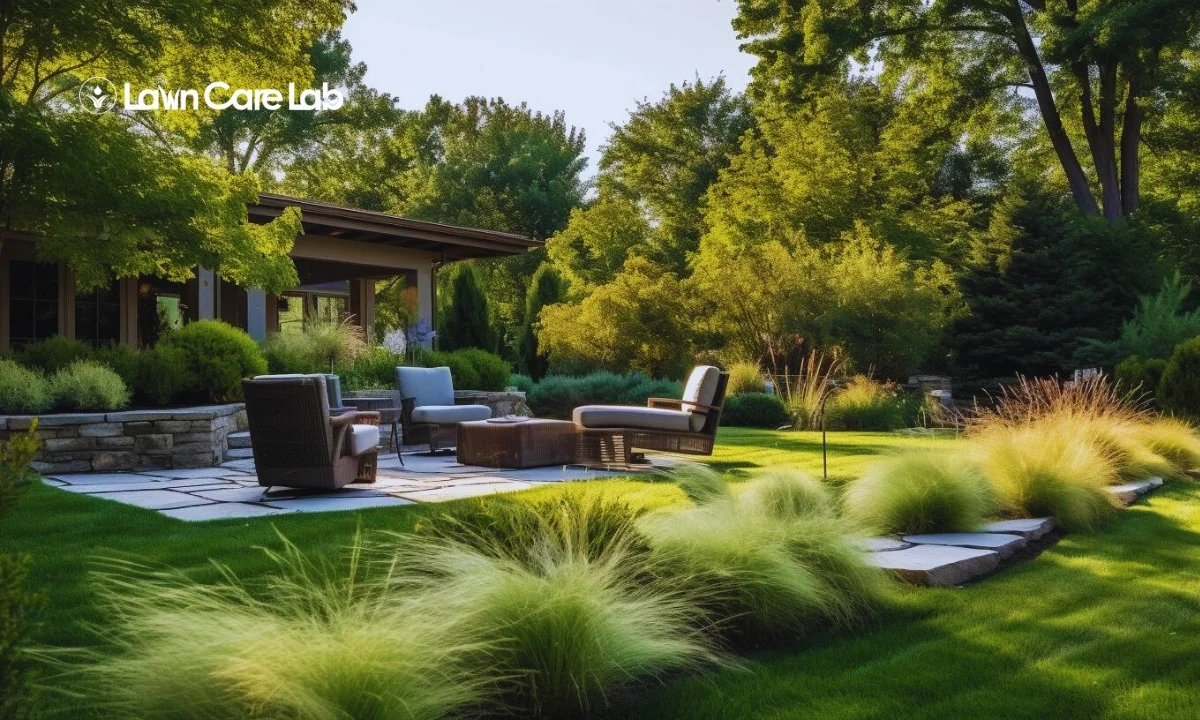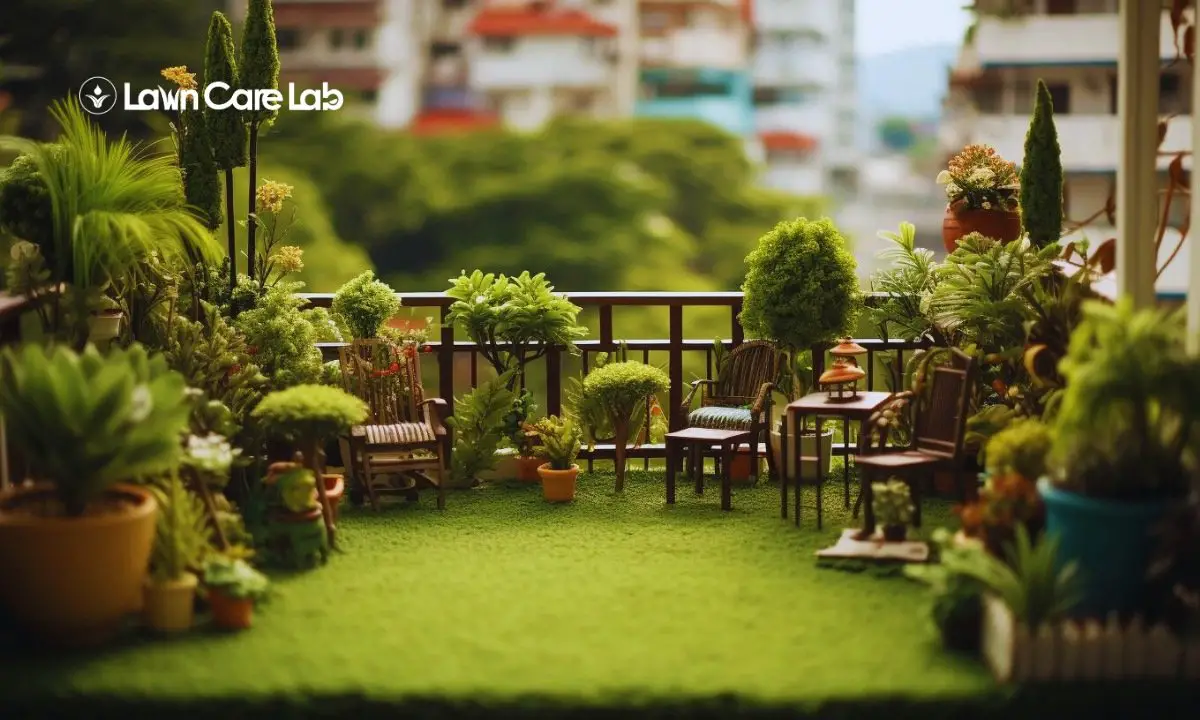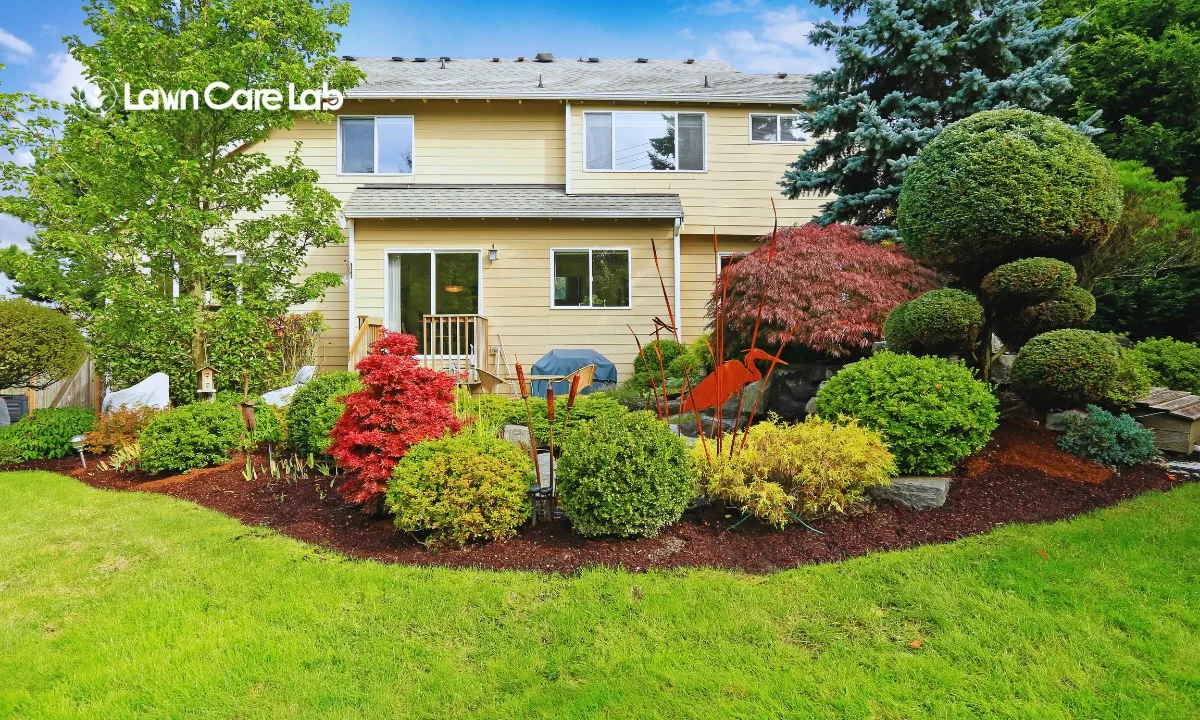Do you have a lawn and yearn to add some flair? Ornamental grasses could be your answer. These plants offer more than just aesthetics. They are robust, require minimal upkeep, and can interject a distinct texture and hue to your lush landscape.
Let’s consider some ingenious methods to use to incorporate these botanical gems into your lawn design. You might be surprised at their potential to make your yard a visually striking spectacle.
So, shall we begin to foster your creativity?
‘As every gardener knows, a lawn is more than just grass. It’s a canvas waiting for your imagination to paint it.’
Table of Contents
Basics of Ornamental Grasses
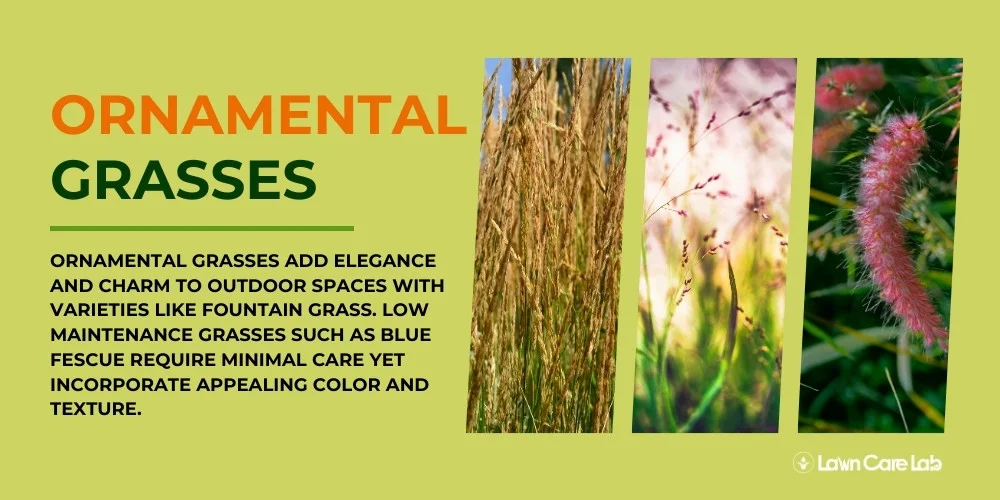
Ornamental grasses can add elegance to your outdoor spaces. There are numerous varieties with unique growth habits and requirements. Understanding their needs can help you choose the right ones for your lawn, ensuring they thrive and contribute to a beautiful landscape.
Let’s begin by discussing the variety of ornamental grasses you could select for your lawn.
Types of Ornamental Grasses to Consider
Consider adding ornamental grasses to your garden for their distinct charm. Fountain Grass and Feather Reed Grass are both hardy options.
In case you’re searching for an element of chromatic beauty, the Japanese Silver Grass, adorned with silver plumes and brilliant autumn shades, is a worthy contender.
Low Maintenance of Ornamental Grasses
Some ornamental grasses require little attention but offer high aesthetic value for your garden design. Blue Fescue and Switchgrass are noteworthy due to their minimal watering, fertilizing, and trimming needs. They are ideal for creating a low-effort, appealing landscape.
Their ability to flourish in different soil conditions and resist most pests and diseases make them a reliable choice. Thus, these grass types offer the opportunity to maintain an attractive, hassle-free garden.
Colorful Ornamental Grasses
Consider using ornamental grasses like Purple Fountain Grass or Golden Japanese Forest Grass to add vibrancy and texture to your garden. Learn how to incorporate them into your garden design and enhance its overall aesthetic appeal.
Let’s make our gardens more beautiful with these infectious and stunning grasses.
Designing Your Lawn with Ornamental Grasses
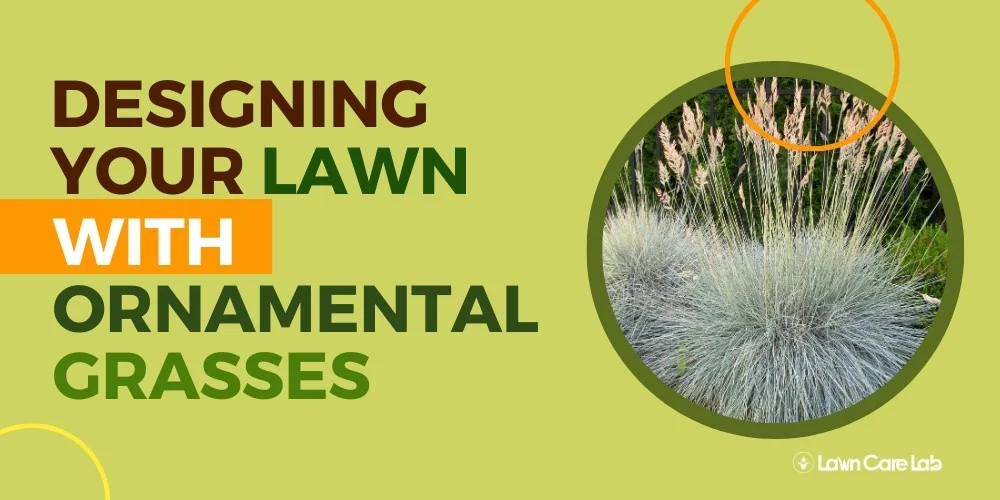
Ornamental grasses can enhance the look of your lawn with their texture, color, and year-round appeal. They add a unique element to your garden design and create visual interest.
Incorporating Ornamental Grasses with Other Plants
Integrating ornamental grass in your garden is a great start. Pair tall, feathery grasses with flowering perennials or light, airy grasses with leafy shrubs for a pleasing visual rhythm.
Plan carefully, and turn your garden into a vibrant living painting that showcases the beauty of ornamental grasses and accompanying plants.
Complementary Plants for Ornamental Grasses
Pairing ornamental grasses with other plants can enhance their beauty. Broad-leafed flora contrasts textures, while low-growing Sedums with tall grasses add height variation.
Experiment with colors to enhance your garden’s aesthetic appeal. Pair bright grasses with dark foliage for a visually stimulating outdoor space that is safe and elegant.
Creating Unique Lawn Patterns with Ornamental Grasses
Consider your lawn as an artist’s palette, with ornamental grasses taking the role of vibrant colors. The strategic placement of these adaptable plants allows for creating unique, eye-catching patterns.
Arrange designs horizontally or vertically to personalize your lawn.
Horizontal Arrangements AND Vertical Arrangements
Add decorative grass arrangements to your garden for a better look.
Horizontal stripes create movement and continuity, while vertical configurations add depth and dimension.
Use tall grasses with shorter plants for a dynamic contrast.
Feel free to experiment and construct a secure, appealing space reflecting your style and vision.
Caring for Ornamental Grasses Through the Seasons
Ornamental grasses can add texture, movement, and visual interest to any garden. Proper care and maintenance will keep them healthy and vibrant for years to come. Tailoring your care routine to the seasons is key.
Summer Care
- Water thoroughly and infrequently, allowing the soil to partially dry between waterings.
- Prune back overgrown plants to improve air circulation.
- Stake tall flowering grasses to prevent toppling.
Spring Care
- In early spring, clear away any dead foliage from the previous year. Be gentle when trimming around new shoots.
- Watch for pests like aphids and signs of diseases. Treat any issues promptly.
- Apply a slow-release fertilizer if needed to nourish plant growth.
Fall Care
- As winter approaches, reduce watering frequency.
- Cut back warm-season grasses to 6 inches to prevent damage. Leave cool season varieties tall for winter interest.
- Mulch around the base to insulate roots from cold weather.
Winter Care
- Water occasionally if winter is dry. Potted grasses may need more frequent watering.
- Cut back any remaining foliage before new growth emerges in spring.
Customizing your maintenance plan is key to preserving your grasses’ health and visual appeal.
Common Challenges and Solutions for Ornamental Grass Care
Maintaining healthy and visually appealing ornamental grasses requires controlling pests, diseases, blunders, and overgrowth. Effective strategies exist to tackle these problems and ensure robust lawn care.
For instance, homemade soap spray can deter common pests like aphids.
Pests and Diseases
To care for your ornamental grasses, watch for potential threats like aphids, mealybugs, rust, leaf spot, and root rot.
Here’s a streamlined guide to help you maintain the health of your ornamental grasses:
Aphids and Mealybugs: Controlling pests in your garden can be done with insecticidal soaps or natural predators such as ladybugs.
Rust and Leaf Spot: To prevent the spread of these diseases, promptly prune infected areas and improve air circulation around your plants.
Root Rot: This disease can be prevented by ensuring proper garden drainage to reduce water stagnation and, thus, prevent root rot.
Overgrowth and Thinning
To keep your ornamental grass healthy, address overgrowth by pruning and dividing it regularly. If your grass is thinning, it may need more light, so consider adjusting its placement or increasing its exposure to sunlight.
Conclusion
So, you’ve found the allure of ornamental grasses irresistible. Their dynamic colors and diverse textures can bring a new dimension to your landscape design.
Remember, their longevity relies heavily on proper care and maintenance. By infusing a little imagination and commitment, you can cultivate a lush haven that’s eye-catching and effortless to maintain.
Are you set to don your gardening gloves and breathe new life into your lawn? The domain of ornamental grasses is just a garden spade away!
- How Green Spaces Influence Community Interactions - July 8, 2024
- Lawn Fungal Diseases: Identification and Treatment - July 3, 2024
- Lawn Care for All Seasons: A Year-Round Guide for Extreme Climates - June 24, 2024

